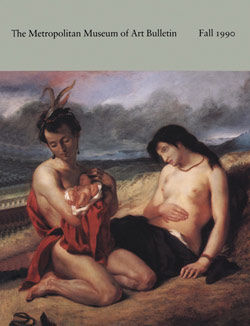Snuff Tray
Not on view
Snuff inhaled through tubes from small trays or tablets such as this one was a widespread practice in Precolumbian South America. In the San Pedro de Atacama region of northern Chile a large number of snuff trays have been found in burials in association with other paraphernalia, such as inhaling tubes, spatulas, small mortars and pestles, and snuff-powder containers. The snuff was prepared from the leaves, resin, and seeds of plants, many of them hallucinogenic, which were dried and finely ground. Historic and current data suggest that snuff had many purposes in the Andes: it was used to cure various ailments, to alleviate pain and hunger, to provide alertness in war and hunting, and to induce trances during rituals and religious ceremonies. The tray is decorated at one end with three carved figures. At the opposite end are the remains of an indigenous repair, a tie preventing a split, running the length of the tray, from widening.
Due to rights restrictions, this image cannot be enlarged, viewed at full screen, or downloaded.
This artwork is meant to be viewed from right to left. Scroll left to view more.




